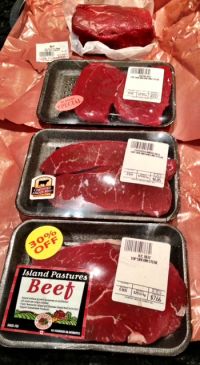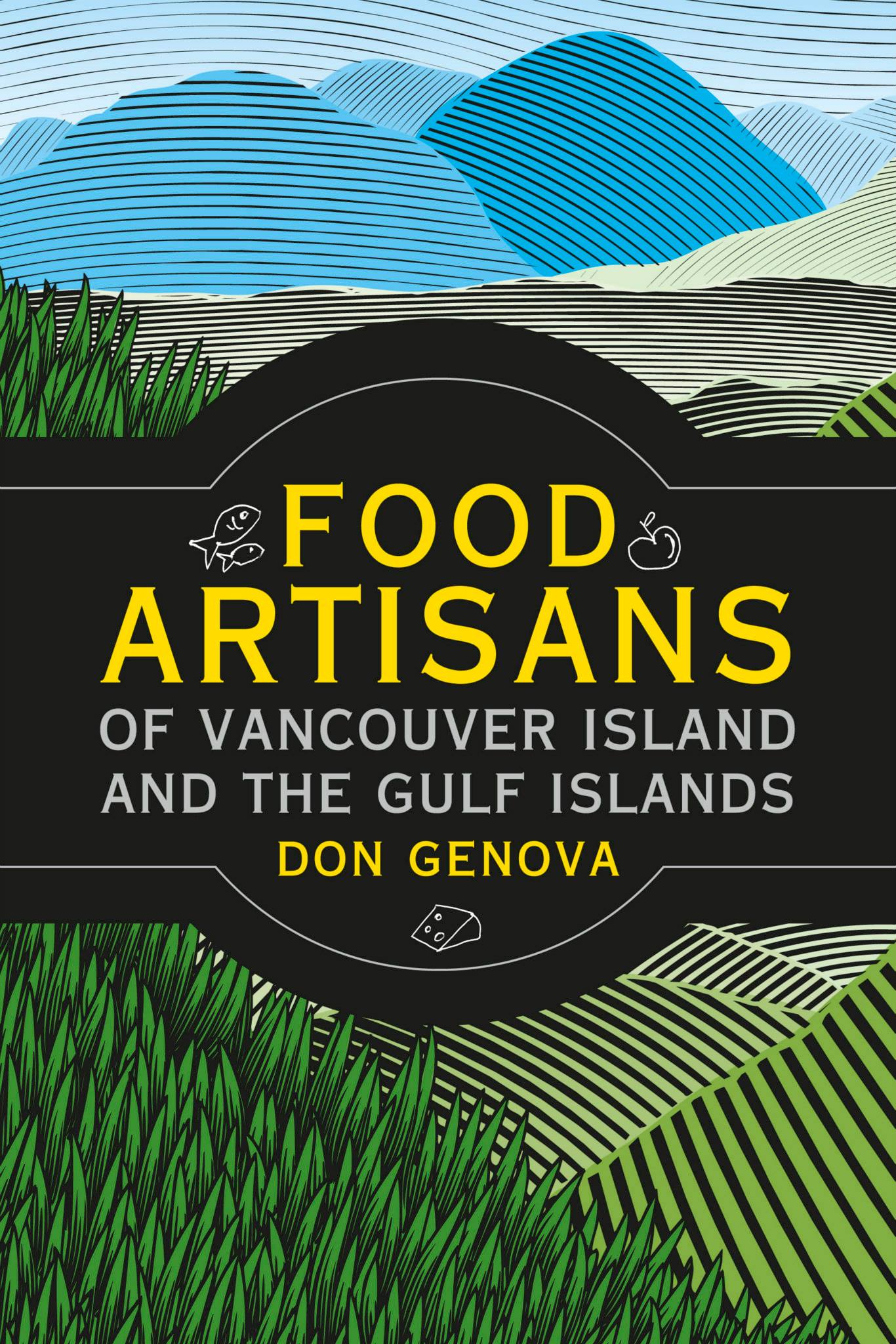Beef is one of our favourite foods in Canada. According to industry figures, every Canadian consumes 46 pounds of beef every year. But how much do you know about the kind of beef you’re buying or how it is raised?
This is a BIG topic, so all I can do here is take a small bite of it, but I hope to get you thinking about where you buy your beef and what goes into its production. Obviously this is mostly for the interest of people who are committed meat eaters. And beef is in steaks, stews, some hot dogs, hamburgers of course, meat pies, soups…a whole range of processed foods as well as what we make at home from scratch. What got me started on this, though, was a series of articles I read in Forbes magazine about labeling of brands of beef. The articles talked mainly about what real Kobe and Wagyu beef from Japan is, and how American ranchers have co-opted those names to raise cattle in America that bear little resemblance to what certified Kobe or Wagyu beef is in Japan. It didn’t say the beef wasn’t any good, but they shouldn’t really be calling it by those names.
What about here in Canada, how do we know what we’re getting?
We actually have a pretty wide selection of beef to choose from, and how it is packaged and labeled can lead to a lot of confusion. Yesterday I went to my neighbourhood Country Grocer store in Cobble Hill. I was able to buy the same cut of beef from three different sources, each with a varying degree of clarity on the label. The fourth source was the Cowichan Valley Meat Market, where all the beef comes from their own Westholme Farm, north of Duncan, where it is also processed in a federally-inspected slaughterhouse.
I bought four top sirloin steaks, all around the same thickness, from four different sources.
 From the least expensive to the most expensive:
From the least expensive to the most expensive:
Australian Beef: $5.50/lb $12.10/kg The label just said ‘Australian Beef’. Some Australian beef is grain-finished…it’s incredible to believe it costs so little even after being shipped here from Australia!
Certified Angus Beef (A brand label) $9.00/lb $19.82/kg – This beef could be from the United States. I looked up the brand on the internet and couldn’t find any Canadian producers, but the official website states that the ranchers who raise cattle for this brand “commit to a never, ever policy, raising cattle without antibiotics or added hormones. And cattle are fed a strictly vegetarian diet.” You may find another special brand of beef in Canadian supermarkets called ‘Sterling Silver’.
Island Pastures Beef $11.41/lb $25.11/kg – the label on this steak told me that the cattle are raised on Vancouver Island and Denman Island, without growth hormones or antibiotics and are grass-fed, and the origin of all the cattle is verified, which is important for tracing any food safety concerns.
Cowichan Valley Meat Market: (Quist Beef) $11.99/lb $26.38/kg
I talked to one of the counter sales people at the butcher shop, who told me that their beef is also hormone and antibiotic free. If one of the cows gets sick, it is treated, but it is tagged as such and can’t be slaughtered until three months after any anti-biotic treatment so that the medicines have been flushed out of the animal’s system. They receive a mix of feeds including silage, which is a blend of hay and grass, as well as barley, but can’t call them grass-fed or grain-finished, since they always receive a balance of those food sources.
In a nutshell, grass-fed beef only eat grass and hay their whole lives once they’ve been weaned off milk. The resultant beef has a better ratio of Omega 6 to Omega 3 fatty acids, it is leaner, has more Vitamin E than grain-finished beef and higher levels of CLA, an acid that health professionals believe has cancer-fighting properties. For more on grass-fed beef, click here.
I just brushed each steak with olive oil, sprinkled with salt and freshly ground pepper, and grilled over medium-high heat about 3 minutes a side for medium-rare.
They ALL tasted good. The least expensive beef, from Australia, is on the left, then they proceed to the right as their price increases as described above.
Australian – a little chewy, but also the juiciest and darkest-coloured of the four.
Certified Angus Beef Brand – very tender, good flavour
Island – most flavour…seemed a little fattier (although didn’t seem to have any more marbling than any of the other steaks.) Not as tender as the Angus
Quist – Also tender, but not as much flavour as the Island. The steak with the densest fibres.
What should you consider when you are buying beef? I think being able to trace the animal back easily to determine how it was raised and how it was fed is the most important issue. I don’t want to buy any beef that has spent time in a traditional CAFO, or Concentrated Animal Feeding Operation. This is where cattle are crowded in and fed antibiotics and growth hormones and grain to fatten them quickly. Cows are not built for eating grain and it’s a contributing factor to e-coli production, the kind of e coli that can make you very sick if you don’t cook your beef all the way through.
More people are starting to care about this issue, so it has become easier to find grass-fed beef or at the very least cows that aren’t finished in CAFO’s. Your local butcher should be able to tell you all about the beef in their counter, just like I was able to ask questions at Cowichan Valley Meat Markets. We’ve lost a lot of knowledge in our supermarket meat sections, but if you’re lucky you will find someone with experience and knowledge about where their meat is coming from. I’ve been lucky enough to purchase a side of beef directly from a farmer and that’s a great way to ensure local production continues. And it’s a great way to know what’s in your ground beef. I didn’t even get into the pink slime issue when it comes to ground beef but here’s a link to another CBC Radio interview on that subject. And I’m even a member of a Facebook page called Island Meat Co-Op where members share knowledge of where to find quality Island-raise meats such as beef and pork. So, as usual, it’s a bit of work to get to know where your food comes from but in the end it’s worth it….
If you want to listen to what guest host Michael Tymchuk thought of the four different steaks I cooked, the segment should turn up on the All Points West website here.
To find out more about grass-fed food products, visit this great site, Eat Wild. It will help you locate ranchers and farmers who produce grass-fed beef products in BC, Canada and around the world.





Thanks for sharing this great article, I really enjoyed the insign you bring to the topic, awesome stuff!